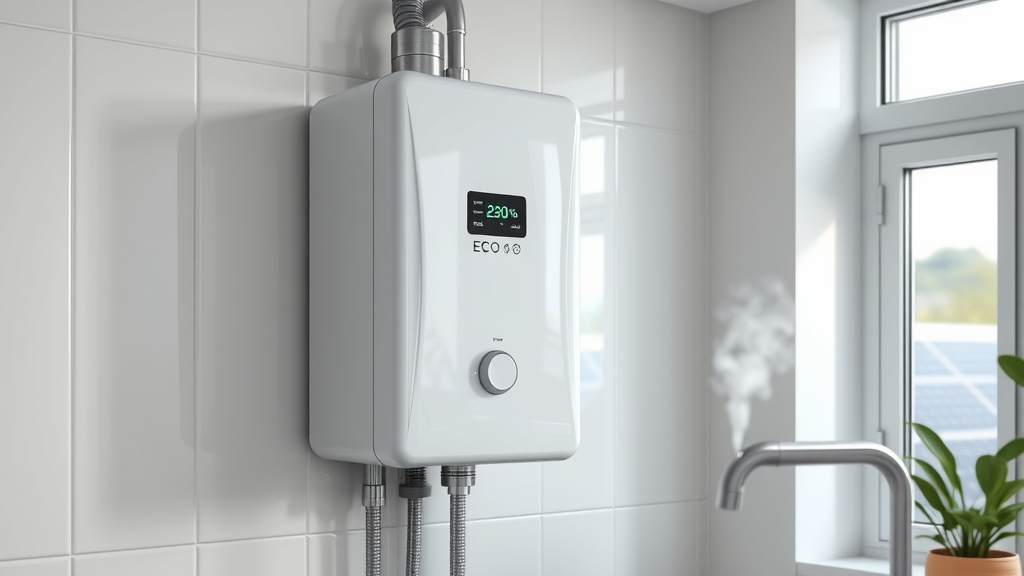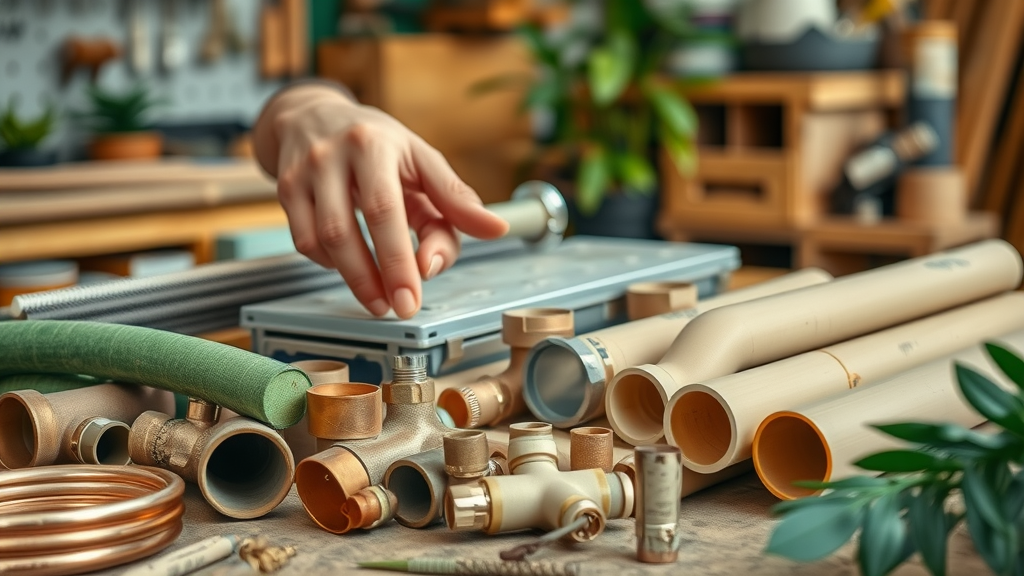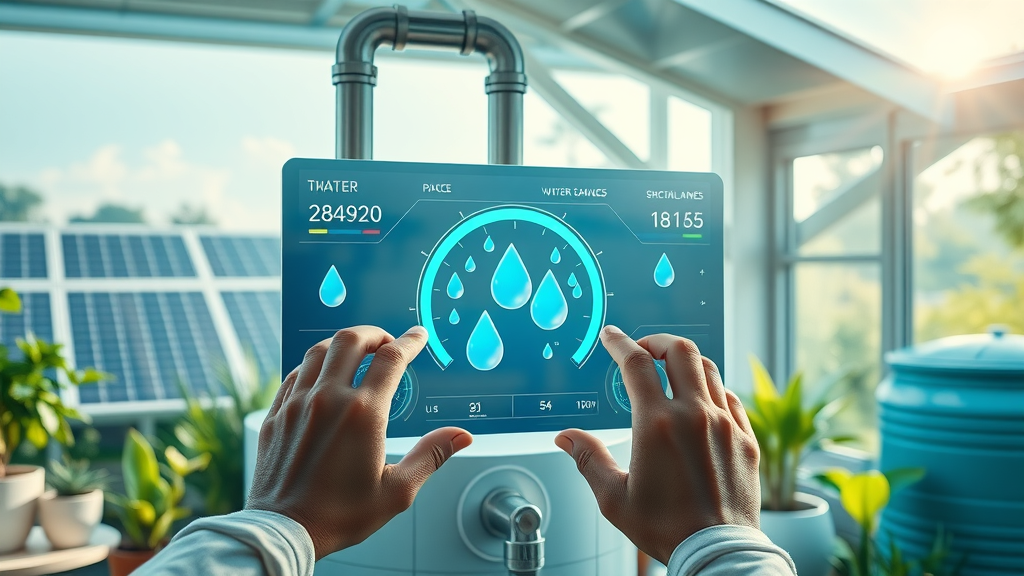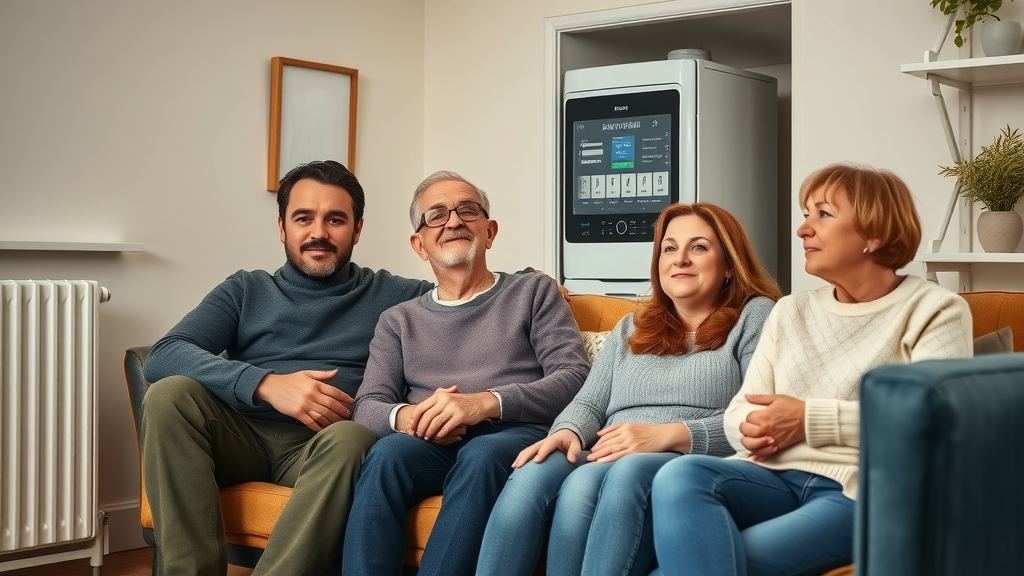Did you know that the average home can waste up to 10,000 gallons of water annually through leaks alone? This remarkable statistic highlights the urgent need for sustainable plumbing solutions . In a world facing increasing water scarcity and environmental concerns, modern sustainable plumbing does more than just deliver water—it actively conserves it, reduces utility bills, and fosters a healthier planet. Read on to uncover how you can future-proof your home while making a real difference, one drop at a time.
Unlocking the Power of Sustainable Plumbing Solutions: Why They Matter
Sustainable plumbing solutions are rapidly transforming how we think about water systems in our homes. By focusing on efficient water usage and reducing waste, these systems directly address rising water costs, diminishing natural resources, and environmental impact. Today’s eco-friendly plumbing isn’t just a trend; it’s a vital part of responsible homeownership. For example, installing low-flow showerheads, upgrading to modern tankless water heaters, and using advanced leak detection can all contribute to lowering your water bill while conserving precious resources.
The shift to sustainable plumbing solutions is significant because it empowers homeowners to significantly reduce their overall water consumption and energy consumption . With innovative products and smarter layouts, you can achieve both efficiency and long-term savings. Practical changes—from rainwater harvesting systems to eco-friendly piping—can make immediate, scalable impacts on your home’s sustainability. The result is a more resilient, cost-effective, and environmentally conscious household.

Sustainable Plumbing Solutions: The Ultimate Guide for Homeowners
- Why sustainable plumbing is increasingly crucial in modern homes
- Top sustainable plumbing solutions you can implement today
- Key technologies advancing sustainable plumbing systems
- Actionable tips for greener water usage and heating
- Answers to common questions on eco-friendly and green plumbing
Understanding Sustainable Plumbing: The Foundation of Efficient Plumbing Solutions
What Makes Plumbing Solutions Sustainable?
What makes plumbing solutions sustainable? At the heart of sustainable plumbing is the goal to reduce water and energy consumption while minimizing negative environmental impact . A sustainable plumbing system is designed with both efficiency and longevity in mind, prioritizing devices and layouts that conserve water, lower energy use, and limit the demand for natural resources. For instance, low-flow fixtures, advanced piping materials, and efficient layout planning all help conserve water and reduce resource waste.
The backbone of sustainable plumbing solutions is a holistic approach: it’s not just about swapping old faucets for new ones. Instead, it involves evaluating the entire plumbing system—from the water source and distribution to fixtures, appliances, and drainage—with the goal of maximizing every drop and reducing water waste. The incorporation of technologies like smart leak detection and greywater recycling systems further enhances sustainability while keeping your home’s water pressure and reliability intact.

Plumbing System Life Cycle and Environmental Impact
A full assessment of any plumbing system should consider its entire life cycle, from material extraction to end-of-life recycling. Traditional systems typically use materials like PVC or metals that carry high energy and resource costs, and they can be wasteful during both manufacturing and disposal. In contrast, sustainable plumbing solutions employ recycled, renewable, or easily recyclable materials, which cuts down on emissions and landfill contributions.
Life cycle analysis reveals that highly durable and easily maintained systems not only last longer but also require less frequent replacement—further reducing waste. This extended lifespan, combined with features like water recycling and leak detection, keeps water bills and environmental footprints lower over time. By opting for solutions with a smaller life cycle impact, homeowners directly contribute to a more responsible and sustainable future.
Key Features of Sustainable Plumbing Systems and Solutions
- Low-flow fixtures and appliances
- Efficient water systems and layouts
- Eco-friendly piping and fittings
- Advanced leak detection technology
- Water recycling and greywater systems
| Feature | Traditional Plumbing | Sustainable Plumbing Solutions |
|---|---|---|
| Water Usage | High | Low to Moderate |
| Materials | Standard PVC/Metal | Recycled/Eco-friendly |
| Energy Requirements | High | Low |
| Lifespan | Standard | Extended, with less frequent maintenance |
Revolutionary Water Heaters: Efficient Water, Sustainable Performance
Tankless Water Heaters: Maximizing Efficiency with Sustainable Plumbing
The introduction of the tankless water heater marks a turning point in efficient water heating. Unlike traditional tanks, which constantly keep hot water ready, tankless systems heat water on demand, reducing energy consumption and eliminating standby heat loss. This shift means homeowners can maintain robust hot water access while significantly reducing utility bills and environmental footprint.
Upgrading to tankless water heaters can also improve system longevity and reduce the risk of leaks, since there’s no large tank that can corrode or burst. Because they use less energy and water, these heaters embody the principles of sustainable plumbing solutions , making them a prime choice for eco-aware households.
Solar Water Heating and Energy-Efficient Water Heaters
Solar water heating systems are at the forefront of sustainable technology. By harnessing solar energy to heat water , these systems can drastically cut down on home energy use and greenhouse gas emissions. Combined with efficient water heaters that employ heat pumps or advanced insulation, modern homeowners can benefit from consistent, reliable hot water with minimal reliance on fossil fuels.
Together, solar water heating and energy-saving devices improve both water and energy efficiency , reducing your water bills and environmental impact. They often qualify for government incentives as well, making them a smart upfront investment for long-term savings.

Rainwater Harvesting Systems: Making Every Drop Count
Integrating Rainwater Harvesting Into Your Plumbing Solutions
Rainwater harvesting offers one of the most practical and impactful ways to transform modern homes into sustainable havens. By capturing and reusing rainwater, homeowners can supply toilets, irrigation systems, and even washing machines—shaving significant gallons off municipal water consumption . Integrating a rainwater harvesting system into your plumbing layout can relieve stress on municipal pipelines and reduce your overall water bills .
The process begins with strategically placed rooftop catchments, gutters, and storage tanks. These connect seamlessly into existing plumbing systems with the right filtration and pressure regulation. With professional installation, rainwater collection works in harmony with other sustainable plumbing solutions for comprehensive efficiency.
Practical Applications for Harvesting Systems
A rainwater harvesting system isn’t just theoretical—it’s a proven strategy for reducing reliance on traditional water supplies. Homeowners can use collected rainwater for landscape irrigation, car washing, laundry, and even some indoor uses with proper filtration. This setup helps to reduce water waste and makes your home's plumbing solutions more resilient during droughts or water restrictions.
In addition to lowering the average water bill , practical rainwater systems can buffer against environmental uncertainty, encourage self-sufficiency, and promote sustainable community development. They are easy to scale, fitting both large suburban properties and compact urban settings.
Sustainable Materials for Plumbing: Building a Green Foundation

- Recycled copper
- PEX and HDPE piping
- Lead-free brass
- Bamboo components
"The right choice of materials can reduce a plumbing system’s environmental impact by up to 40%." – Environmental Plumbing Alliance
For any sustainable plumbing solutions system, choosing the right materials is crucial. Recycled copper pipes offer durability without the environmental costs of new mining, while PEX and HDPE piping are flexible, long-lasting, and require less energy during production. Modern eco-friendly systems now also use lead-free brass for fixtures, eliminating toxic contaminants, and even bamboo components for their renewability and biodegradability.
When selecting materials, consider not only durability and safety but also the full environmental cost from extraction to disposal. By investing in sustainable materials, you minimize your home’s environmental impact and benefit from longer-lasting, lower-maintenance plumbing systems .
Greening Your Home: Steps to Implement Sustainable Plumbing Solutions
- Conduct a plumbing system audit
- Replace outdated fixtures with low-flow models
- Invest in water-efficient appliances and water heaters
- Incorporate a rainwater harvesting system
- Switch to sustainable and recycled materials
- Set up regular maintenance for optimal efficiency

Proactive steps are key to greening your home and reaping the benefits of sustainable plumbing solutions . Start with a professional audit, which identifies leaks, inefficient fixtures, and upgrade opportunities in your plumbing system . Replacing old faucets, toilets, and showerheads with low-flow alternatives can instantly reduce water consumption and save gallons each day.
Next, look at equipment upgrades: select energy-efficient water heaters and install a rainwater harvesting system for outdoor irrigation. Replacing traditional pipes with those made from recycled or eco-friendly materials rounds out the process. Committing to a regular maintenance schedule—checking for leaks, flushing heaters, and monitoring water pressure—ensures that your green investments deliver ongoing savings.
People Also Ask: Essential Questions About Sustainable Plumbing Solutions
What are the sustainable materials for plumbing?
Common sustainable materials for plumbing include recycled copper, PEX and HDPE piping, lead-free brass, and bamboo components. These materials are chosen for their longevity, low toxicity, and minimal resource extraction or processing, helping to reduce the overall environmental impact of your plumbing system .
What are some examples of sustainable solutions?
Examples of sustainable plumbing solutions include low-flow fixtures, energy-efficient water heaters (like tankless and solar options), rainwater harvesting systems, water recycling setups (such as greywater systems), and plumbing constructed from eco-friendly or recycled materials. All of these work together to reduce water waste and lower energy use in your home.
What is eco in plumbing?
The term eco in plumbing refers to systems, materials, and techniques designed to lessen the environmental impact of delivering and disposing of water in a home. Eco-plumbing embraces efficiency, smart technology, and non-toxic, recyclable materials to minimize waste and conserve natural resources while ensuring reliable service.
What is greening in plumbing?
Greening in plumbing means updating or designing plumbing systems to maximize sustainability. This involves adopting low-flow appliances, efficient layout, rainwater harvesting, eco-friendly materials, and leak detection technology to deliver robust performance with the lowest possible water and energy footprint.
Frequently Asked Questions on Sustainable Plumbing Solutions
- Does retrofitting a plumbing system with sustainable features increase home value? Yes, upgrading to sustainable plumbing solutions can raise home value. Buyers are increasingly seeking energy and water-efficient features, and green certifications can offer strong selling points in any market.
- How does a sustainable water system result in lower utility bills? Sustainable water systems lower your bills by reducing water consumption and energy use for heating and delivery. Advanced plumbing systems prevent leaks and use water more efficiently, significantly cutting monthly costs.
- Are tankless water heaters more expensive to maintain? While tankless water heaters may have higher upfront costs, their maintenance is usually less frequent compared to traditional tanks, and their longer lifespan provides excellent long-term value.
- What are the government incentives for sustainable plumbing? Government incentives often include rebates, tax credits, and grants for installing energy-efficient appliances, water-saving devices, and rainwater harvesting systems. Check local programs for details.
Expert Insights: The Future of Plumbing Solutions and Sustainable Technology
"With innovation in water heaters, rainwater harvesting, and materials science, the future of sustainable plumbing brightens the path for greener living in every home." – Industry Sustainability Expert

Experts agree: the evolution of sustainable plumbing solutions is closely linked to advances in smart home technology, new eco-friendly materials, and renewable energy integrations. As more homeowners demand efficiency and resilience, we can expect an explosion in data-driven systems that precisely control water usage and leak detection, while modular rainwater and greywater setups become household standards.
The future holds dramatic improvements in both resource conservation and daily convenience. By blending green infrastructure with digital monitoring and responsive infrastructure, the next generation of plumbing solutions will help families, communities, and the planet thrive.
Making the Transition: How to Get Started with Sustainable Plumbing Solutions
Ready to start? Begin with a detailed audit of your existing plumbing system , identifying leaks, outdated equipment, and excessive water usage. Consult with a qualified plumber experienced in sustainable plumbing solutions to customize a transition plan, picking upgrades that match your property, goals, and local regulations. Research rebates and incentives to maximize return on investment and schedule regular follow-up maintenance.
Even small changes—like replacing inefficient faucets or installing a smart leak detector—can spark broader energy and water savings while building confidence in new, greener approaches. Remember, every step toward sustainability counts!
Start Your Journey Toward Sustainable Plumbing Solutions
Empower your household and future generations by investing in sustainable plumbing solutions today. Make the commitment to upgrade your plumbing system, conserve water, and support eco-friendly innovation. The path begins with a single step—take action for a healthier, greener home now!
Act now:Sources:
- EPA WaterSense – https://www.epa.gov/watersense
- U.S. Department of Energy – https://www.energy.gov/energysaver/articles/selecting-new-water-heater
- Green Plumbers USA – https://www.greenplumbersusa.com/
- U.S. Green Building Council – https://www.usgbc.org/
- Houzz – https://www.houzz.com/magazine/bathroom/sustainable-bathrooms
To enhance your understanding of sustainable plumbing solutions, consider exploring the following resources:
- “Eco-Friendly Plumbing Solutions: How to Make Your Home More Sustainable” ( silverbackplumbinganddrain.com )
This article provides practical advice on implementing water-saving fixtures, energy-efficient water heaters, and sustainable materials to create a more eco-friendly home.
- “6+ Sustainable Plumbing Solutions for a Greener Home” ( supremephc.com )
This resource outlines various sustainable plumbing options, including tankless water heaters, greywater systems, and rainwater harvesting, to help homeowners reduce their environmental impact.
By delving into these articles, you’ll gain valuable insights into practical steps and technologies that can make your home’s plumbing system more sustainable and efficient.
 Add Row
Add Row  Add
Add 









Write A Comment